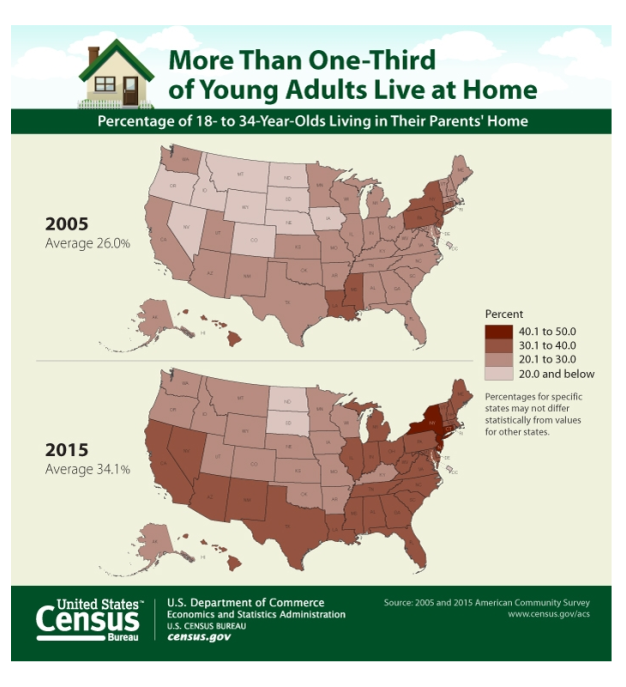
This Great Graphic caught our eye (h/t to Gregor Samsa @macromon). It comes from the US Census Department, and shows, by state, the percentage of young American adults (18-34 year-olds).
The top map is a snap shot of from 2005. A little more than a quarter of this cohort lived at home. A decade later, and on the other side of the Great Financial Crisis, the percentage has risen to a little more than a third.
The deeper the brown color on the map, the great percentage of the young adults that live at home. Although, it is not addressed in this Census Department post, the home that the young people are living is also changing to include more unrelated people.The breakdown of the nuclear family has gone well beyond what Moynihan documented about the African-American community more than 50 years ago.
There are numerous political, economic and social consequences more young people living at home. It says something about household formation, consumption, and home and car ownership.It says something about economic opportunity. Unsatisfied economic aspirations impacts politics. It also suggests a theme I have written about in the Political Economy of Tomorrow: more rigid socioeconomic status, and the increasing difficulty for the middle class reproduce itself.With such low-interest rates (negative rates are still evident in Europe, where many countries have negative yields going out five years, and Japan, where (generic) yields are negative through nine-year duration.














Leave A Comment